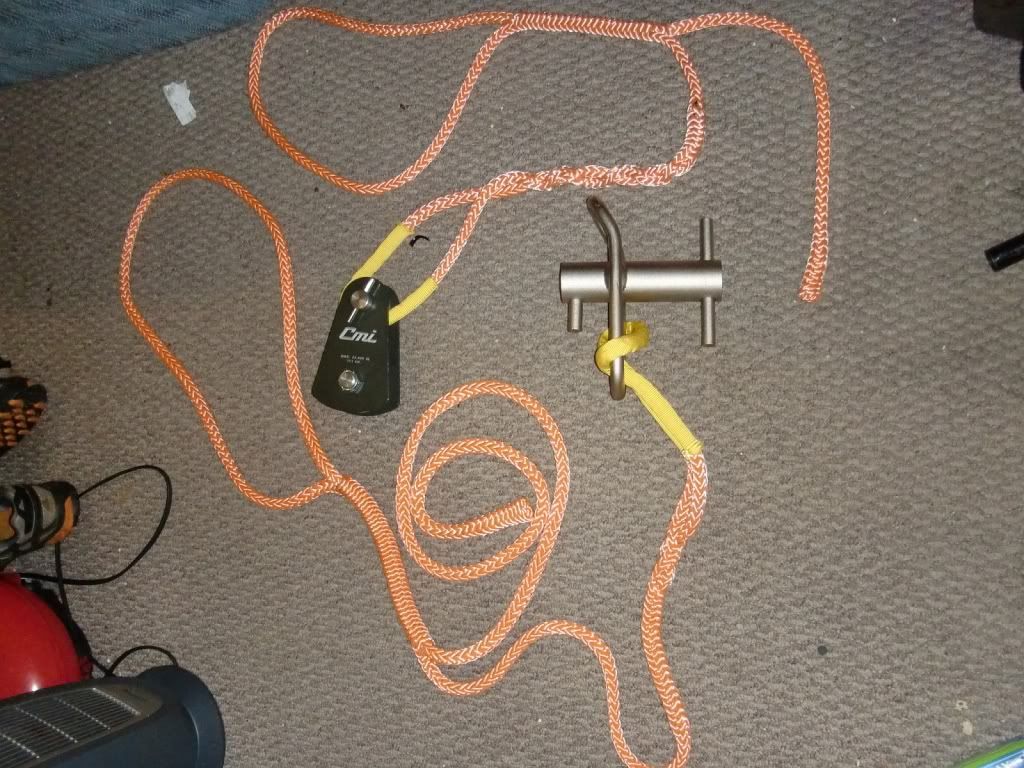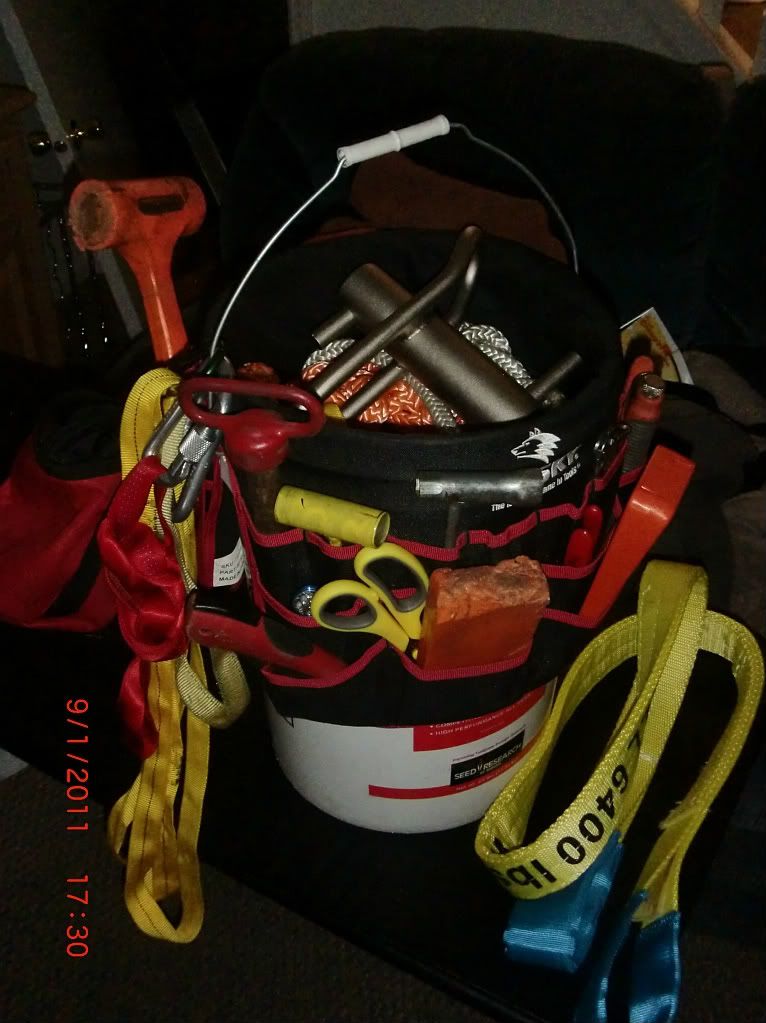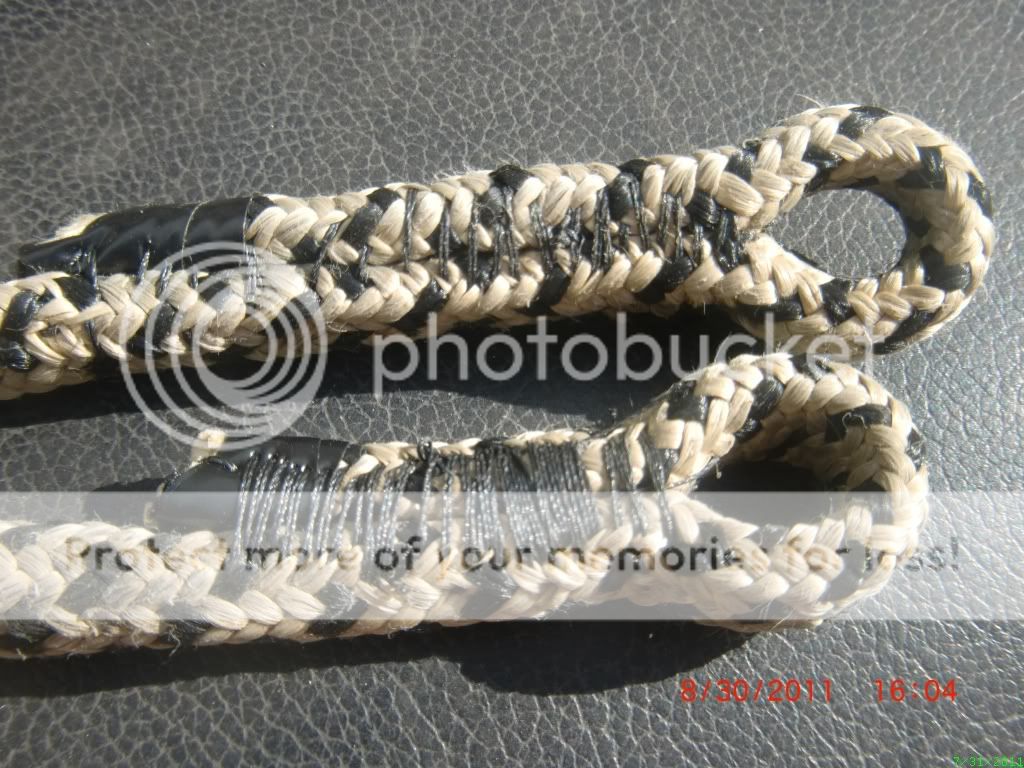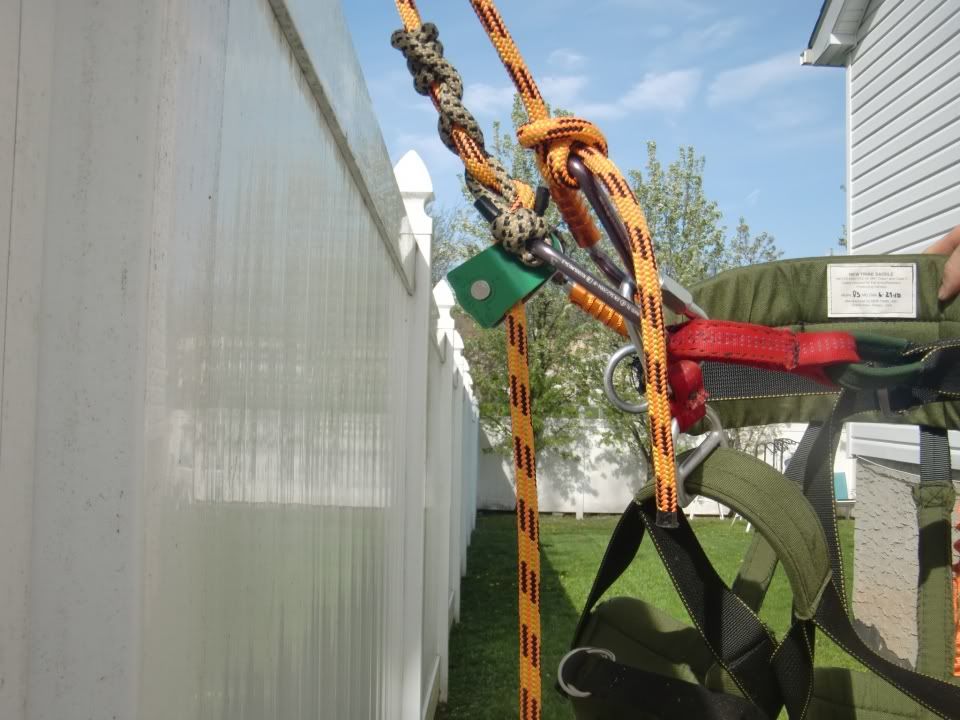I have made a couple things and found a couple low cost solutions.
Here are a couple whoopie slings I made myself with about $16 worth of tenex (1/2") for my block and portawrap.
Splicing tenex is quite easy and can be done with any smooth long object and some electrical tape. I used a piece of a plastic coat hanger as my 'fid' for the task.
http://www.samsonrope.com/site_files/12S_TenexTec_Whoopie.pdf
Here is another storage solution that works good for me. Its just a 5 gallon bucket with a little bucket organizer on it that you can get at the home depot for 6.99 i believe.
Bucket Jockey-80753-1N09 at The Home Depot I can fit my 150' hank of arborplex, 2 whoopie slings, block, portawrap, pruning saw, wedges, felco pruners, scrench, knife, slings, flash light, T27 torx tool, scissors, vice grips, screw drivers, gloves, carabiners, and deadblow hammer all where I need them in an easy to carry system. Even if you have to buy the 5 gallon bucket its still half the cost of the closest comparable rope bag and has way more pockets.
If you know how to use a needle and thread and you can get your hands on some strong heavy duty thread (i use heavy duty upholstry thread, strong stuff) you can make all sorts of custom length slings and splices and gear (homemade throwbags anyone?:msp_thumbup

Above you can see my first attempt at playing around with sewn splice techniques. They may not be pretty but I have failed to break them yet (havent used it to climb, that one is just a test to see if my stitching can hold up) I have also used my sewing skills to make all of my slings, which have held up well to all kinds of abuse, and even the bridge of my saddle.
The double floating bridge setup you see here is very similar to the new tribe Nikosi saddle except that it only cost around $190 to build instead of $360.
The great part about making things yourself, aside from the savings $$$, is that you can customize it to meet your specific needs and you also know exactly how much (or how little:hmm3grin2orange

you can trust your life with it.
My next project that I will be working on is an improved bigshot for under $50. We will see how well that one works out...thankfully im rather adept at the cradle toss method but it would be nice to have a higher degree of accuracy.










